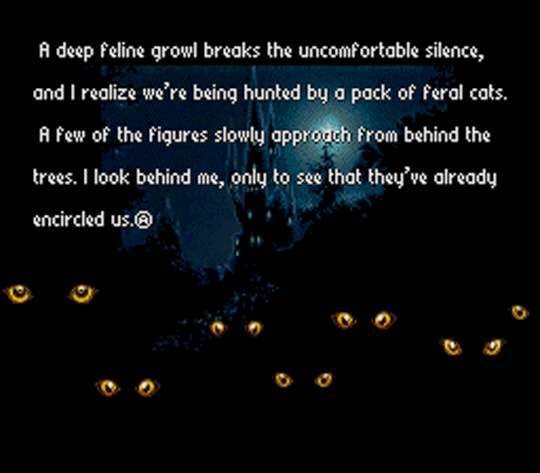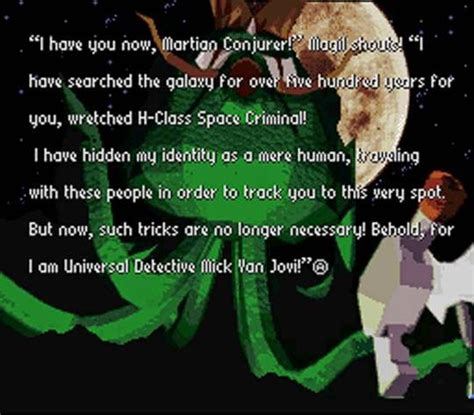Even relative to the rest of their generation, my grandparents were staggeringly ignorant about technology. I never understood how they decided to pick which computer they gifted to my brother and me in the mid-80s; it was certainly not the case that they looked at all of the available options, made an intelligent and informed feature comparison amongst those machines, and chose the one that had the best feature-to-price ratio. But sometime around 1985 or so, they came over to my parents’ house unannounced one evening and told us that they had a gift for us, and opened up the enormous plastic bag my grandfather had brought in with him to reveal a Radio Shack Color Computer 2 in its box. My brother and I tore it open and, over my mother and stepfather’s insistence that we were definitely going to irreparably destroy the VCR, hooked it up to our TV and turned it on to see the memorable 32 x 16 dark-green-on-lime-green text mode for the computer.
Having bought his grandchildren a computer and having seen that it could be turned on to produce text on a TV made my grandfather A Computer Person in his own eyes and he would periodically buy us software based on the fact that a friend’s grandchild liked this game, or he’d seen an ad for the program, or had a theory about whether a game might be fun based on the cover image, or how a coworker had told him that in the future we’d all need to know Lotus 1-2-3. He did not ever really appreciate that there were dozens of different computer types and that software needed to be compatible with the hardware on which it was running. Being an old-school bootstraps-lifting Republican who had a closet stuffed with VHS tapes of Ronald Reagan speeches, his responses to explanations about how you couldn’t run software designed for the Atari 800 on the computer he’d purchased us were limited to “Not with that attitude, you can’t” or “You’re not trying hard enough.” And, further down the line, the history of hardware and operating system emulation and virtualization shows that there’s a sense in which he was right; but it’s not a sense that was helpful to his 9- and 7-year-old grandchildren in the mid-80s. (Two and three decades later, he was still calling me up for remote help “installing this program” and responding to “and did you make sure that it was not just for the Macintosh before you bought it this time?” with a long pause during which you could hear him fumbling at a box and a surly, unconvincing “Yes.”)
My grandparents not only didn’t themselves understand that not all software was compatible with the computer they had purchased, but actively spread that misunderstanding to other relatives, explaining that you could just buy the grandkids whatever to various aunts and uncles and distant cousins. Soon the little desk in the corner of the kitchen with the old TV and the Color Computer 2 had its under-desk shelf filled not just with software for other Radio Shack computers in other incompatible lines that the company made, but also Apple II disks, Nintendo cartridges, cassette software for a Commodore PET, C64 disks, ZX-80 tapes, Texas Instruments game paks, Sega Master System cartridges, and software of other types I can no longer recall. Occasionally, I was able to trade these programs to friends who could use them if the friends were willing to buy me software I could use so they could have something to trade. Provided that the software was something that some friend wanted in the first place.
So I became by default a Radio Shack aficionado. The CoCo 2 was a good little computer for its time, and I happily plunged into the “learn yourself some BASIC” manual, eventually reaching a level of proficiency that allowed me to use the computer to make title screens for my grandfather that I could record onto the beginnings of his Ronald Reagan-speech VHS tapes, which made him boundlessly proud of his descendant’s technological prowess. I also saved up my allowance and extra chores money to buy a game here and there from the local Radio Shack. I picked up their annual catalog and circled the games I wanted to play, saving up money to pick up Zork for several months only to be foiled when my mother saw the Radio Shack-specific packaging,* which depicted a muscular fellow with a moustache wearing armor and swinging an enormous sword at a … pointy-eared thief, I guess? “Violence!” screamed my mother, and that was the end of my hopes of playing Zork until I was in college. But my grandparents, on one of their miscellaneous software-buying adventures, managed to accidentally and unintentionally acquire a compatible program, Robert Arnstein’s Raaka-Tu, which just had a snake and a temple and a statue on the cover, not a burly violent man waving a sword. I suspect that my grandparents picked it up because the cover and description made it vaguely sound like an Indiana Jones movie, a franchise which both of my grandparents were enormous fans of.
I spent dozens of hours on it, trying to figure out how to access and plunder the temple in the jungle. It was a hard little game with its first two or three difficult, death-for-not-timing-every-action-right puzzles needing to be solved even before the temple can be entered, full of sudden violent death (take that, mom), with a classical maze that you can map by dropping objects, and with traps and unpleasant NPCs. For an assembly-language game that fits into 16K of system memory once it’s loaded from cassette, it’s got a large map (40 or so rooms) arranged in an elegant pattern, and a nicely designed set of puzzles and objects. It was a hell of a way to start to figure out parser IF at age eight or so, and I picked up as many other bits of parser IF as I could get away with throughout my childhood, off and on. When I got a Mac my freshman year in high school, I started going back through some of the Infocom games I’d missed, or at least the ones I could get my hands on in an isolated, rural town. (No one I knew had a Mac-compatible version of Zork, though, and it would be quite a while before it would occur to me that I might have been able to run it by patching another Mac-edition Infocom game by writing one or two dozen lines of Pascal, a language I learned at the time, to overwrite the data fork in another copy of an Infocom game with the data file of a PC-version Zork.)
I’ve dipped in and out of the IF scene since the end of the commercial era, but I haven’t been steadily there during that time. I do try to make time to at least play some Comp games when the IFComp is going on, even if I don’t have much other time during the year. I wrote a few bits of elementary parser IF in BASIC as a child (under the influence of Lipscomb and Zuanich’s book), and adapted those techniques to a piece of parser IF written in Pascal for MacOS back when Pascal was a viable MacOS development option. None of those survive, but I’m currently working on a piece in Inform, which has sidelined a half-finished monstrosity in Python.
Oh, and in case you’re wondering, my mother and stepfather’s VCR was fine.
* The linked picture is actually to the cover of the version of Zork I for the TRS-80 Model I, a computer not compatible with the CoCo 2; but the CoCo version had the same cover aside from some obviously deducible changes to verbiage on the packaging. It’s not like Radio Shack was going to pay for a second, completely different manual cover design to sell the game on a different, incompatible system that they also produce.

